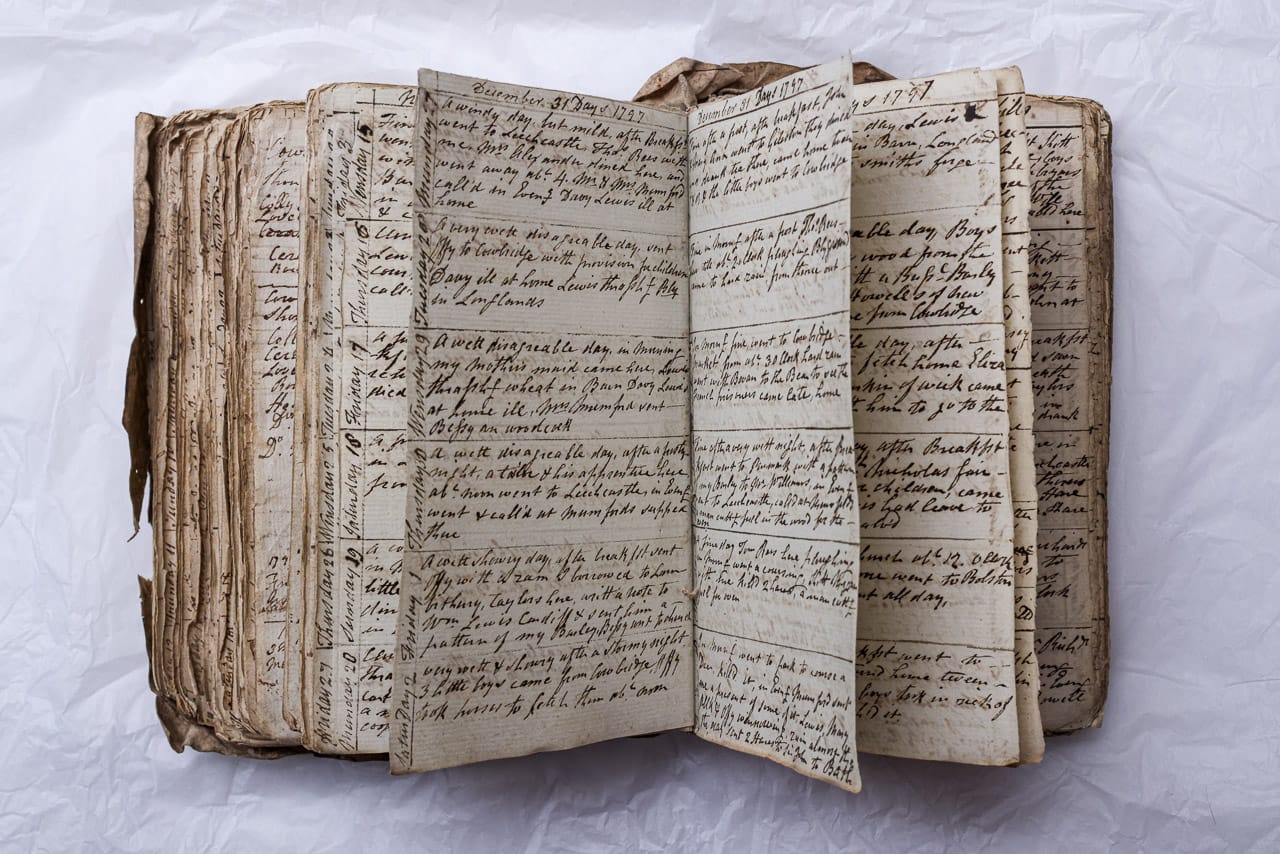Some twenty years ago, a historical treasure of interest to Llantrithyd residents was saved from destruction when neighbours helping to clear the effects of an elderly deceased lady in Monkton Combe near Bath rescued a thick bundle of closely written manuscripts from a garden bonfire. These documents proved to be an extraordinarily valuable set of diaries written by John Perkins, a gentleman farmer from Llantrithyd in the Vale of Glamorgan.
The diaries span fourteen years without missing a single day's entry, from 1 January 1788 to 31 December 1801, totalling 5,114 days and nearly a quarter of a million words. This meticulous record provides a fascinating glimpse into farming, family, and social life in the Vale of Glamorgan during the Napoleonic Wars.

Who Was John Perkins?
John Perkins (1760-1816) was descended from a minor gentry family of Saint-y-Nyll in the parish of St Brides Super Ely. Following his father's death in 1781, he found himself responsible for Saint-y-Nyll and property throughout the Vale of Glamorgan. However, he did not remain at Saint-y-Nyll for long, selling the family estate in 1787.
In 1783, Perkins married Elizabeth Willis (known as "Bessy" in his diaries), a wealthy widow eight years his senior. Elizabeth had previously been the fourth wife of the Reverend William Willis, Rector and Lord of the Manor of Gileston, who had married her when she was 22 and he was already 73. When Willis died in 1780, Elizabeth was left a very rich young widow.
After short periods living in Cowbridge and St Athans, the Perkins family settled at Pentra Farm in Llantrithyd, remaining from December 1789 to July 1801. Pentra was a mixed farm of about 60 acres, for which Perkins paid an annual rent of £60. In addition, he farmed another 24 acres of land on lease and enjoyed a sizeable income from other holdings in the Vale.
In 1801, John Perkins moved the short distance to Ty-draw, the largest farm in the parish, at 360 acres. He continued farming until his death in June 1816 at the age of 56. He is buried in a large family grave in Llantrithyd churchyard. Still, his literary remains—the precious diaries—are now safely preserved in the archive of the Welsh Folk Museum at St Fagans.
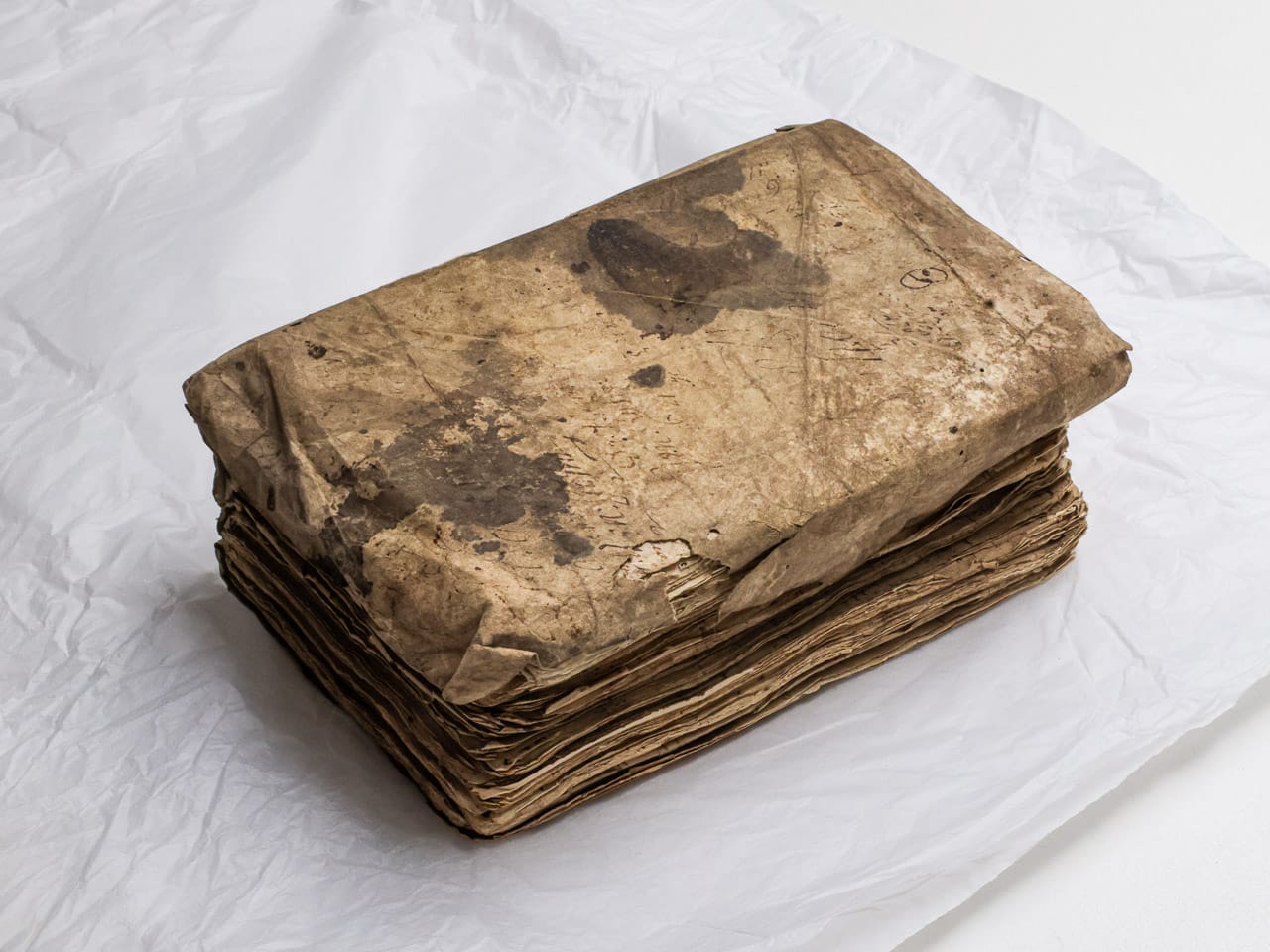
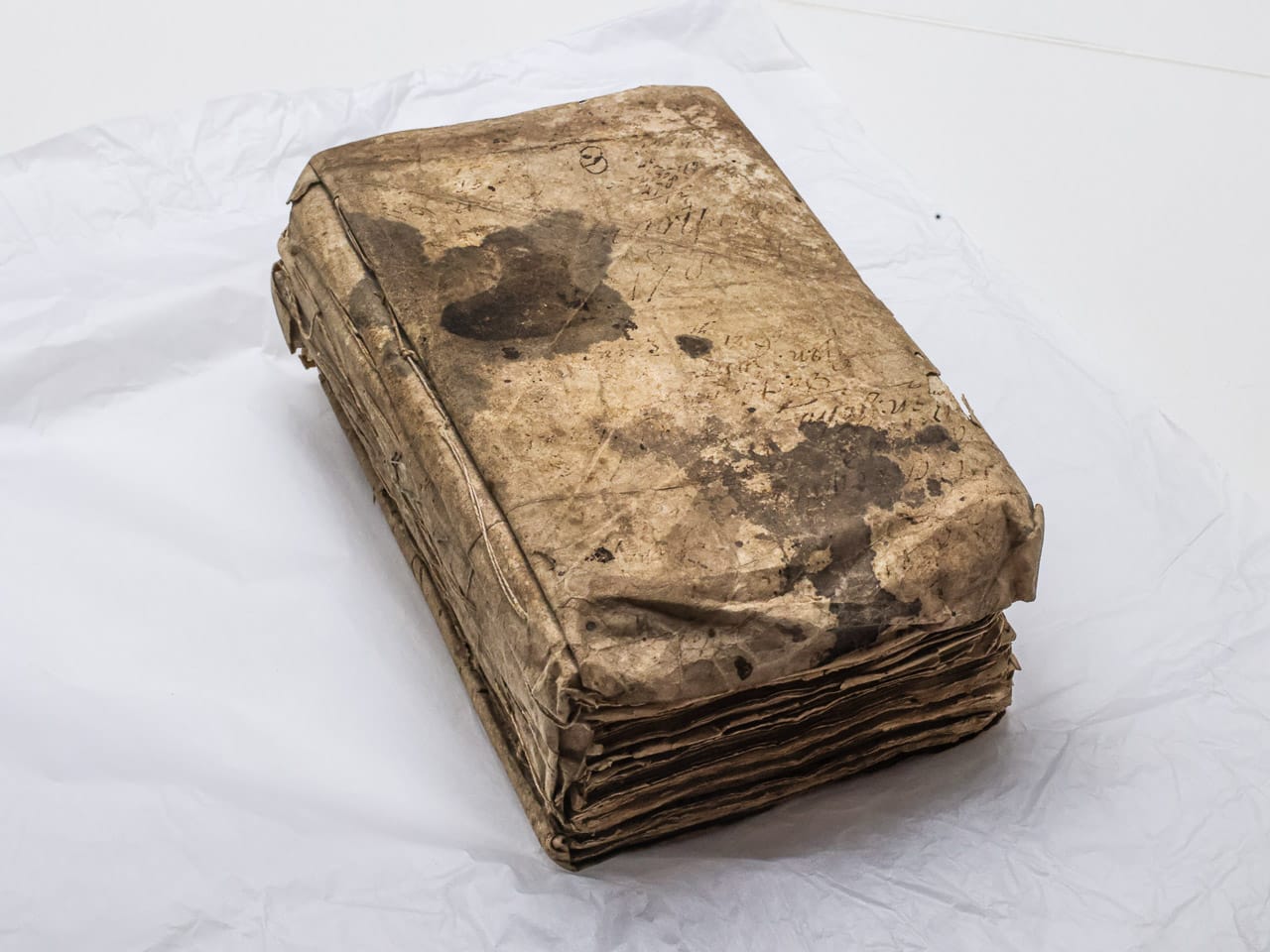

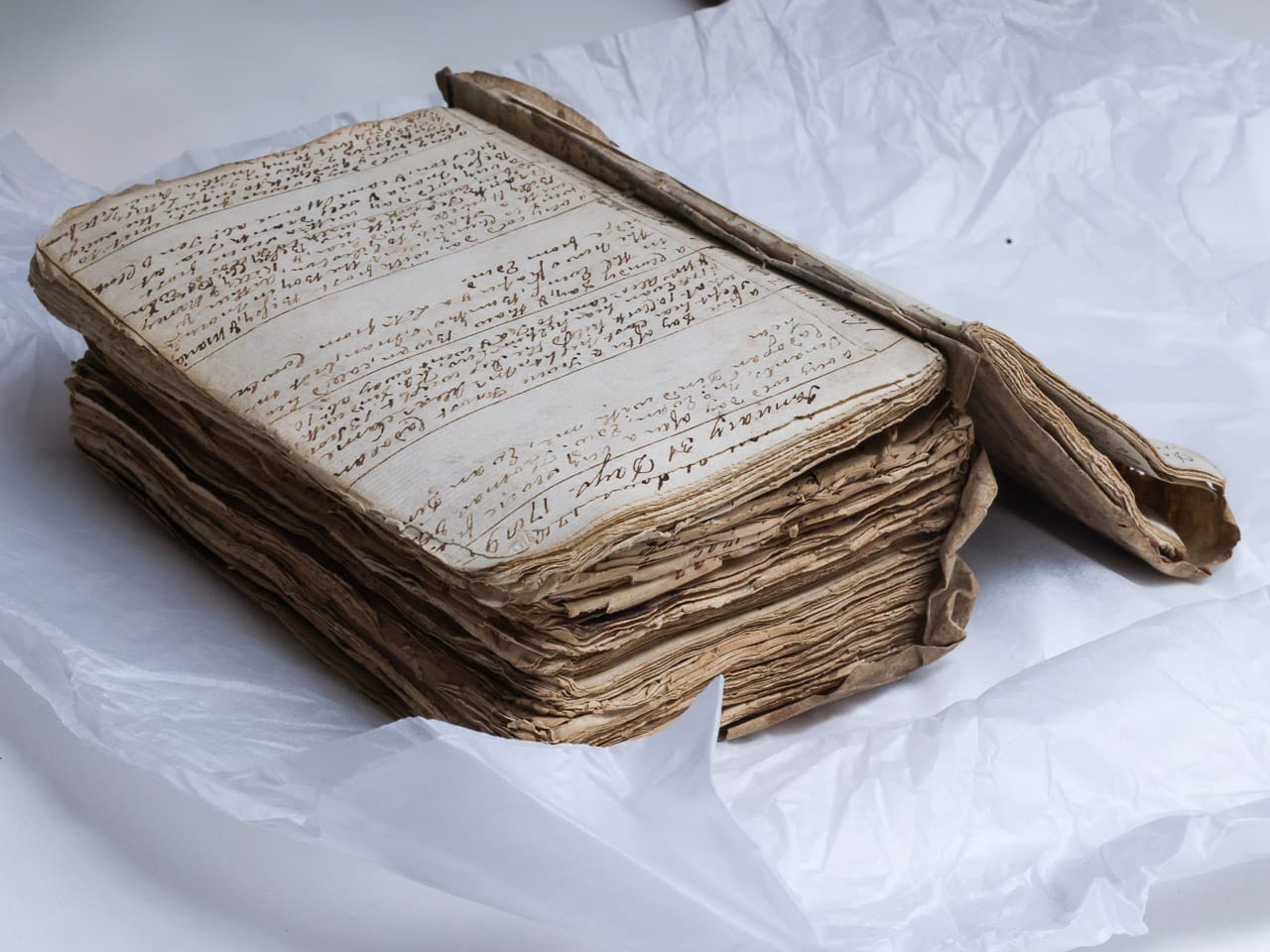

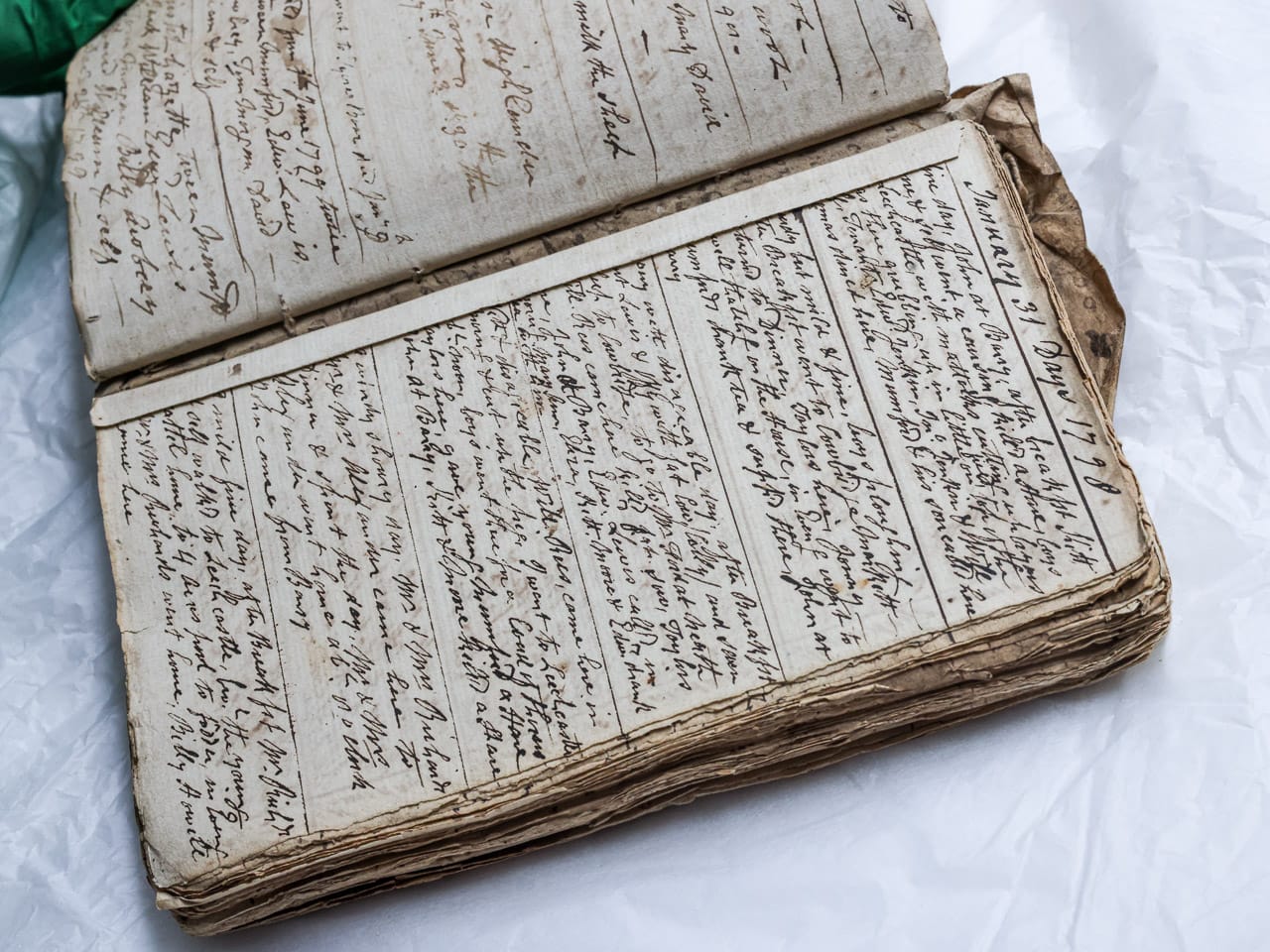
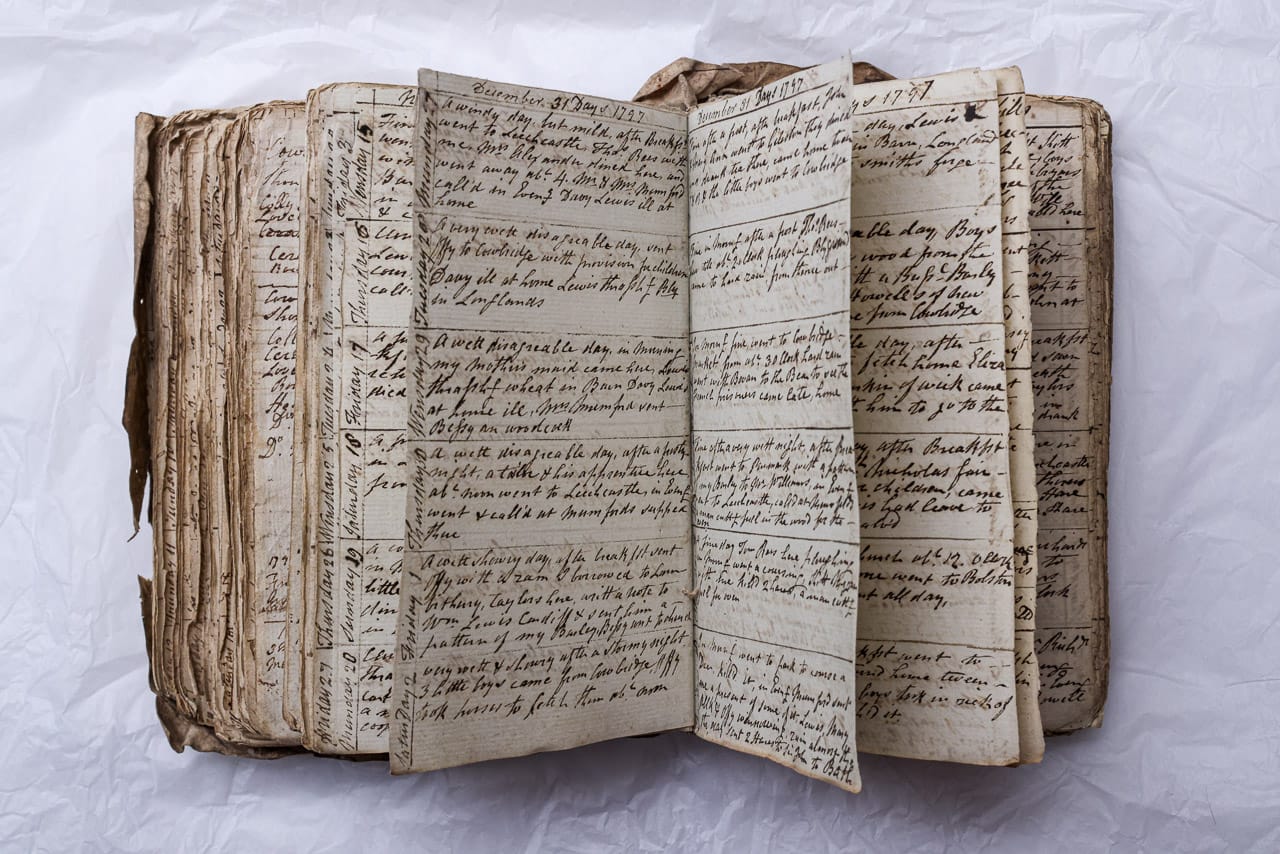
Photographs of Perkins' diary - Nick Russill, May 2025
Life on the Farm
The demands of hay and grain crops dominated the farming year at Pentra. Hay harvest extended from late June to the end of August, while grain was harvested from late August to mid-October, threshed and winnowed from October through April.
John Perkins kept about ten cows, up to six plough oxen, a riding horse, and three or four draft horses. He also maintained a small flock of sheep (in 1799, 22 lambs were weaned from 19 ewes), and after weaning, the ewes were milked all summer for cheesemaking. Additionally, he kept two or three pigs, geese, turkeys, chickens, ducks and bees.
As was common for the time, farm implements were few and primitive. Perkins used wooden ploughs, drag and brush harrows, a field roller, and hand tools such as spades, clod-breakers, picks, hoes and weeding sticks for cultivation. Sowing was done by hand, and scythes were used to mowing hay, barley, and oats, with reaping hooks for wheat. Vehicles included a Glamorgan two-wheeled cart or butt, an Irish car, and a wagon, while threshing was done by flails on the wooden floor of the barn.
Notable Diary Entries
While brief and factual, the diary entries provide a fascinating window into daily life in the Vale of Glamorgan at the end of the 18th century. Here are some highlights:
Mundane Activities
- 8th January 1788: "Thomas Williams came with me to Cowbridge. Mr. Robinson called to see the house; told him the rent £15. He said I should hear from him soon."
- 2nd June 1788: "Kitt and I bathed for the first time."
- 4th November 1788: "Took cheese to market at Cowbridge. Could not sell it so left it with my mother. Returned with spun yarn."
- 5th November 1788: "Took the spun yarn to the weaver at Gileston."
Family Life
- 8th February 1788: "Maria's birthday - 8."
- 16th March 1788: "Bevan called to see the child who is ill. Dr. Walton called here to see the child and sent up some castor oil."
- 4th May 1788: "Willis here to baptise the child."
Exceptional Events
- 3rd March 1788: "A poor child killed by a cart coming down Stalling Down."
- 12th June 1789: "Two young men were drowned at Aberthaw."
- 26th July 1790: "Man of Postcandrill cut his throat."
- 11th March 1791: "One of my oxen dead, hanged himself."
- 1st February 1799: "Snow very deep, a poor child perished in it last night."
- December 1797: Went to the Bear Inn at Cowbridge "to see the French prisoners," captured after the abortive invasion at Fishguard.
- November 1798: "A general fest by proclamation for victory obtained by Lord Nelson in the Nile."
The Deer Park Connection
One of John Perkins' favourite recreational activities was coursing the fallow deer in Llantrithyd deer park. Perkins' diary notably mentioned Richard Mumford (referred to as Mr Mumford, recognising his higher social standing as a gentleman), as a park keeper and observed that the fallow deer wore brass bells on leather collars.
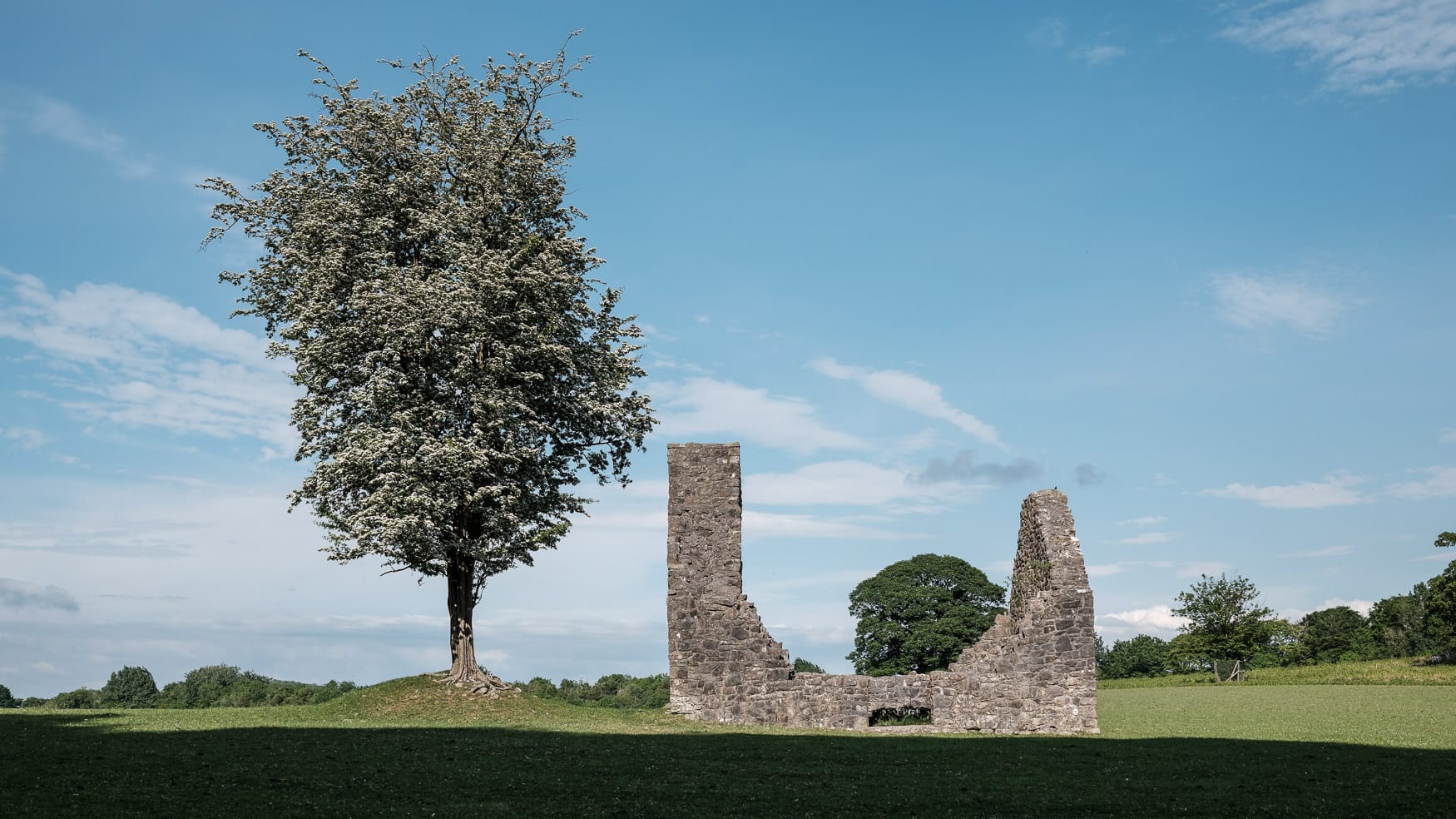
The park was part of the Aubrey family's estates of over 7,000 acres during the eighteenth and nineteenth centuries, with the family seat at Llantrithyd Place, now ruinous, which was said to be one of the finest Tudor houses of its day in Glamorgan.
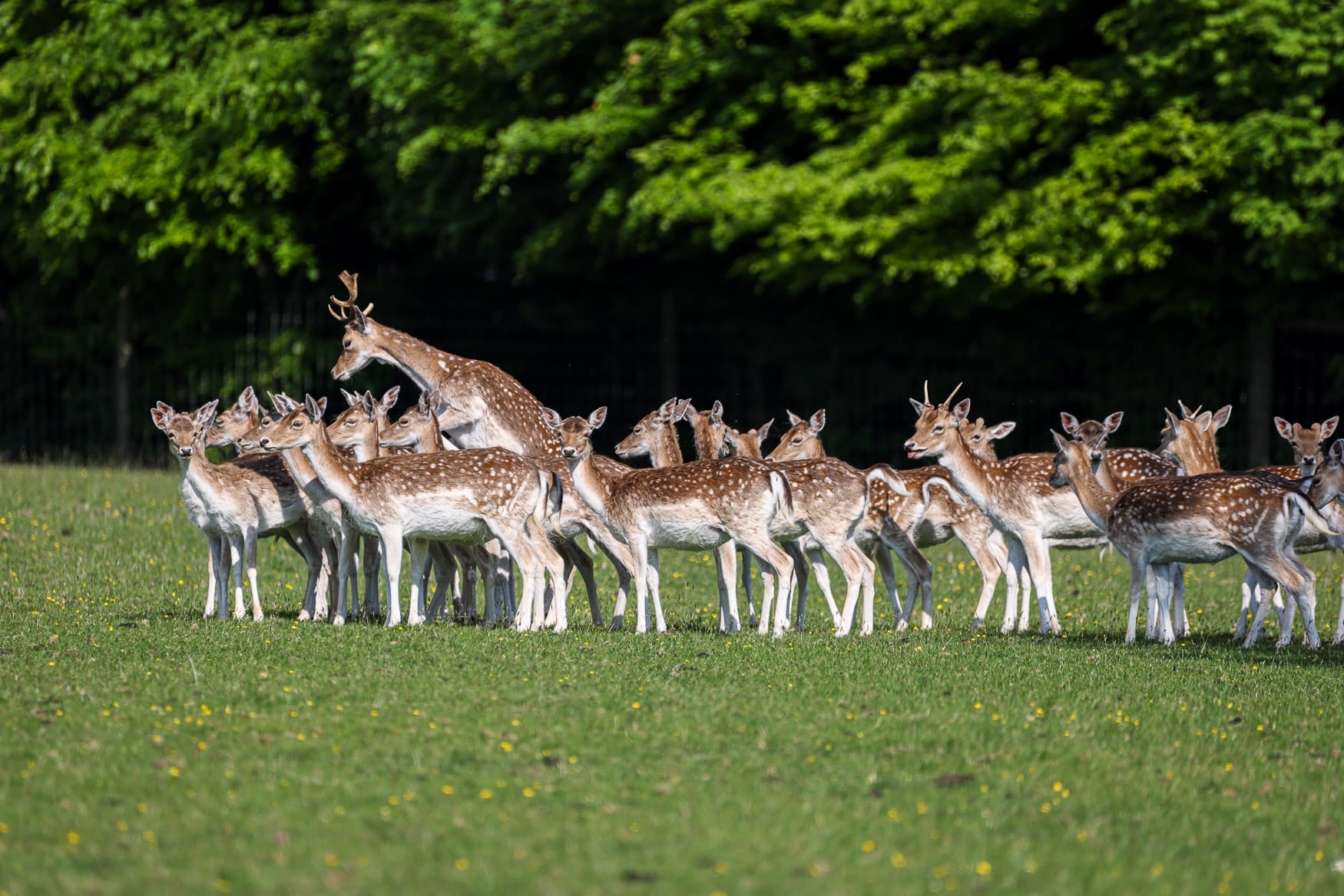
A Limited Horizon
Perhaps most surprising to modern readers is how limited John Perkins' horizons were. In the 14 years covered by the diaries, he never travelled further than 10 miles from home and never spent a night away. His normal circle was Llantrithyd itself, Cowbridge town (three miles away), which he visited regularly for the Tuesday fair or market, and local villages such as Gileston, Llancarfan, Bonvilston and St. Nicholas. He rarely travelled as far as Cardiff, Bridgend, Caerphilly or Llantrisant for livestock fairs.
Besides coursing deer, his main entertainments were rough shooting, hunting hares, horse racing on Stalling Down, and dancing at local mabsants (revels) in the Vale. He occasionally attended cockfighting at the 'Old Post'.
John Perkins' diaries provide an invaluable record of rural life in the Vale of Glamorgan at the turn of the 19th century. They offer insights into farming practices, social customs, and daily routines that might otherwise have been lost to history. Thanks to the quick thinking of those neighbours in Bath, this unique historical resource was preserved for future generations to study and appreciate.
Sources
This article is based on the work of Dr. William Linnard (https://www.peoplescollection.wales/sites/default/files/chs02556DiaryofJohnPerkins1788-1801_0.pdf)
